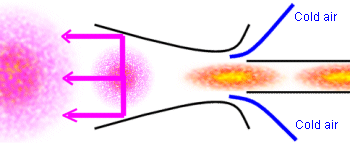Interesting pic .. thanks! As for the triple decker it's likley that it has two inlets per side for totally separate ports to feed the additional levels of diffuser, so this is most likely arranged this way to facilitate a packaging delema.richard_leeds wrote:http://twitpic.com/rv9fq
Seems that they are using some air coming in from above the floor to speed up the DDD exit air flow? Like one of those artist sprays where you blow across the supply tube to draw up ink from a bottle?
Also interesting is how they "gave up" diffuser space on the sides to isolate the diffuser from tire turbulence. I am surprised that no one has done this before, during the season. I have been waiting to see it happen from someone. I'm a little surprised it was Renault though



 (from aardvark.co.nz)
(from aardvark.co.nz)